First published on September 5, 2018 • Last updated on September 5, 2018
This page may contain affiliate links; if you purchase through them,
we may receive a small commission at no extra cost to you.
Ecuadorians divide their country into three distinct regions – el Oriente (the East or the jungle), la Costa (the coast), and la Sierra (the mountains). Each area is not only geographically distinct but culturally as well. In our short time here, we’ve immersed ourselves in the culture where we live, the Sierra. We know the empanadas, the ají, the love of tomate de arbol, the occasional use of the word vos in place of tú, the smooth and easy to understand Spanish accent, the four seasons in a single day, and so much more. We decided that it was time to get our feet wet in a different part of Ecuador so we headed to the Oriente for a couple of days.
Visiting the Oriente
Our destination of choice ended up being a mixed bag. If you’d like to read my TripAdvisor review of the lodge we chose, feel free! But, as I write about our trip, you’ll see the problems were not just about a simple lodge but more about the type of tourism being practiced in this corner of Ecuador.
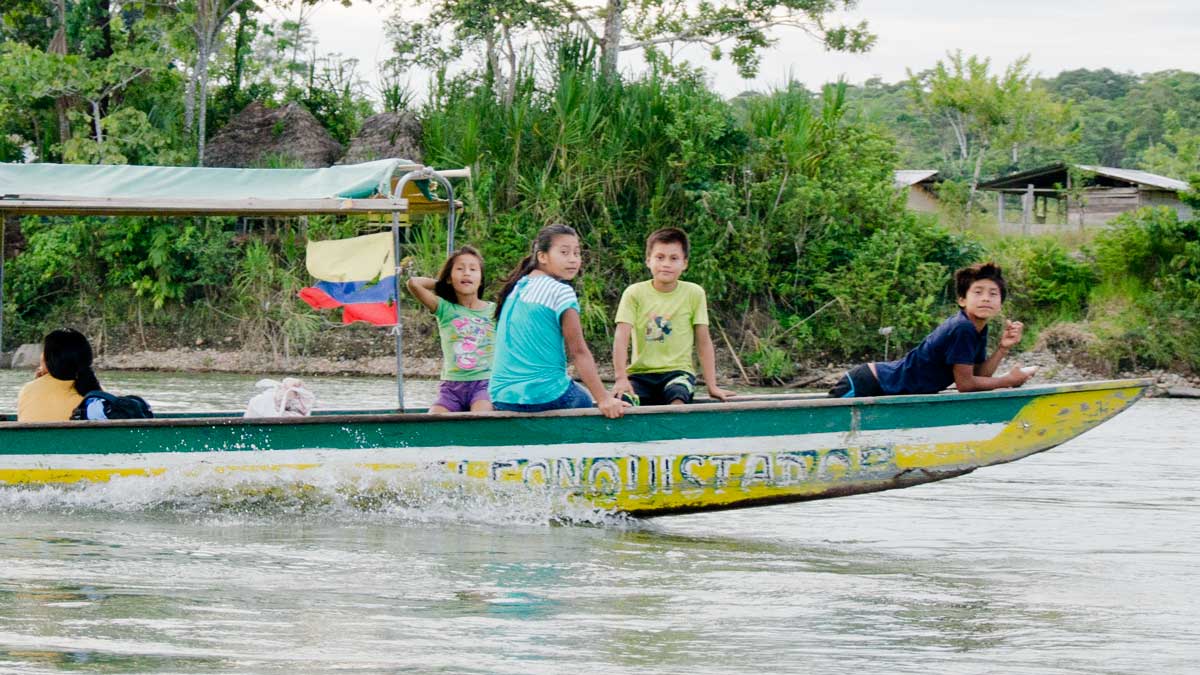
Of the tours offered to us by the lodge, the most interesting included a visit to an indigenous tribe that lives on one of the islands in the middle of the Napo River. You could tell that the people living there were very used to having tourists come by. We were immediately welcomed by young children who were selling small bracelets and such made from natural vegetation and then folded origami style. In fact, most of them were folding pieces of grass as they walked alongside one or other of the tourists. They would then hold out the item and if you took one, you were expected to give a small coin in return. If you gave one child a quarter, then the others were immediately standing at your side expecting their own sale.
The Life of a Child on This Island
These kids were only following the example set by their elders, who were also selling local handicrafts, though of finer detail and long-lasting materials. But the entire experience felt wrong. I know that I could delve into subjects of white privilege and of child labor and capitalist vs socialist societies, but I honestly don’t know where to start. I do know that I asked all of the kids I gave coins to about school. Some understood my Spanish and I learned that they go to school across the river and that they study Spanish while they speak Quichua at home. But one young lady sticks out in my mind. She would only answer my questions by nodding her head and I began to realize she didn’t understand me at all but she wanted me to believe that she did. And I began to wonder if she actually did go to school. And what kind of future these children would have. Could they live at home and make a living in their own communities? Or would they have to leave in order to find jobs in the city? And how difficult it is to know what the right answer actually is and that the right answer isn’t actually mine to find, but belongs to their parents and their community.
Do Our Visits Help or Harm?
I do have to wonder if the visits from all these tourists are actually helping or hurting this community. These kids obviously see the white people, and we were mostly white, even local Ecuadorian tourists were lighter-skinned, as money. I gladly purchased a handmade necklace and a hand-carved gourd after two of the matriarchs had taught us about the making of chicha, a fermented beverage made from yuca and sweet potato.
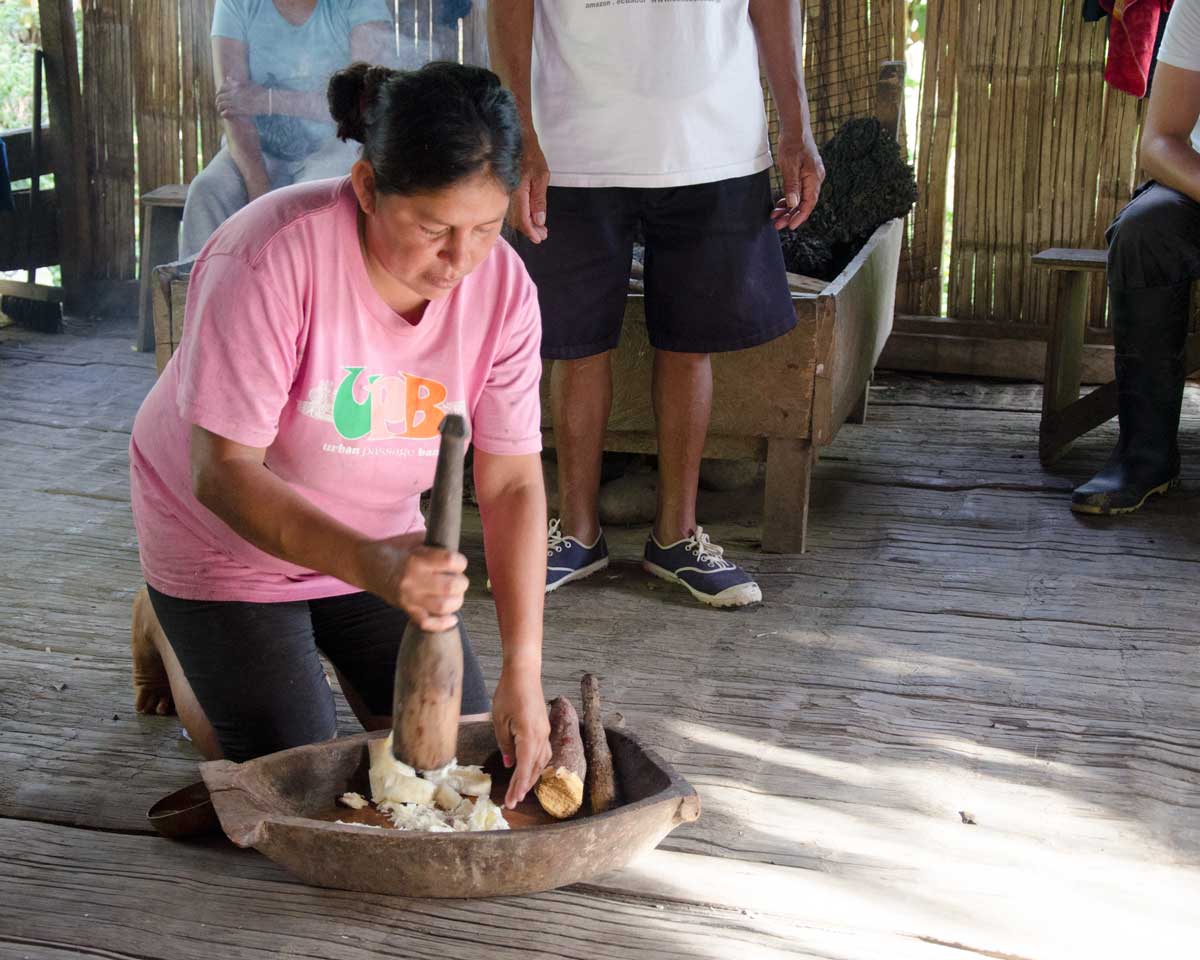
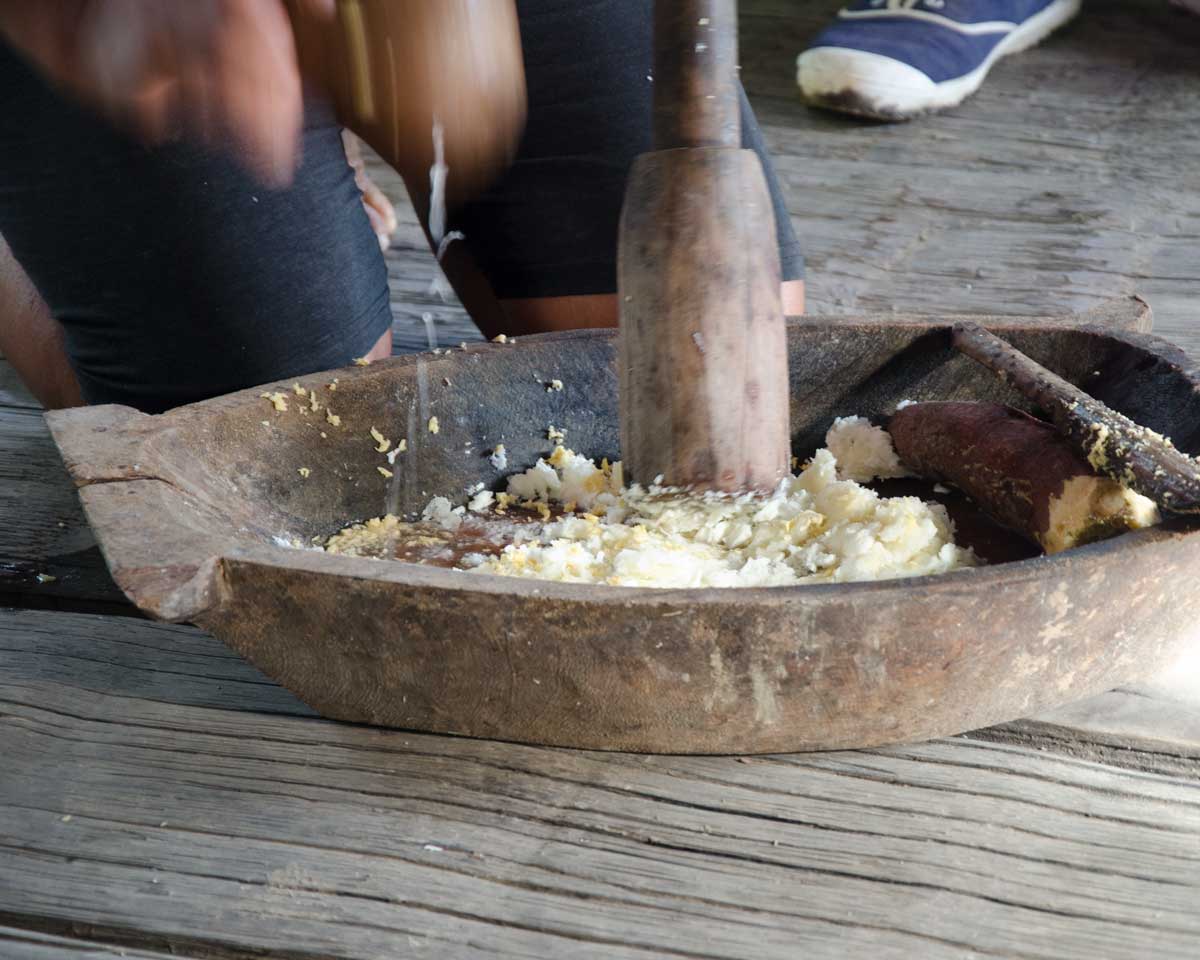
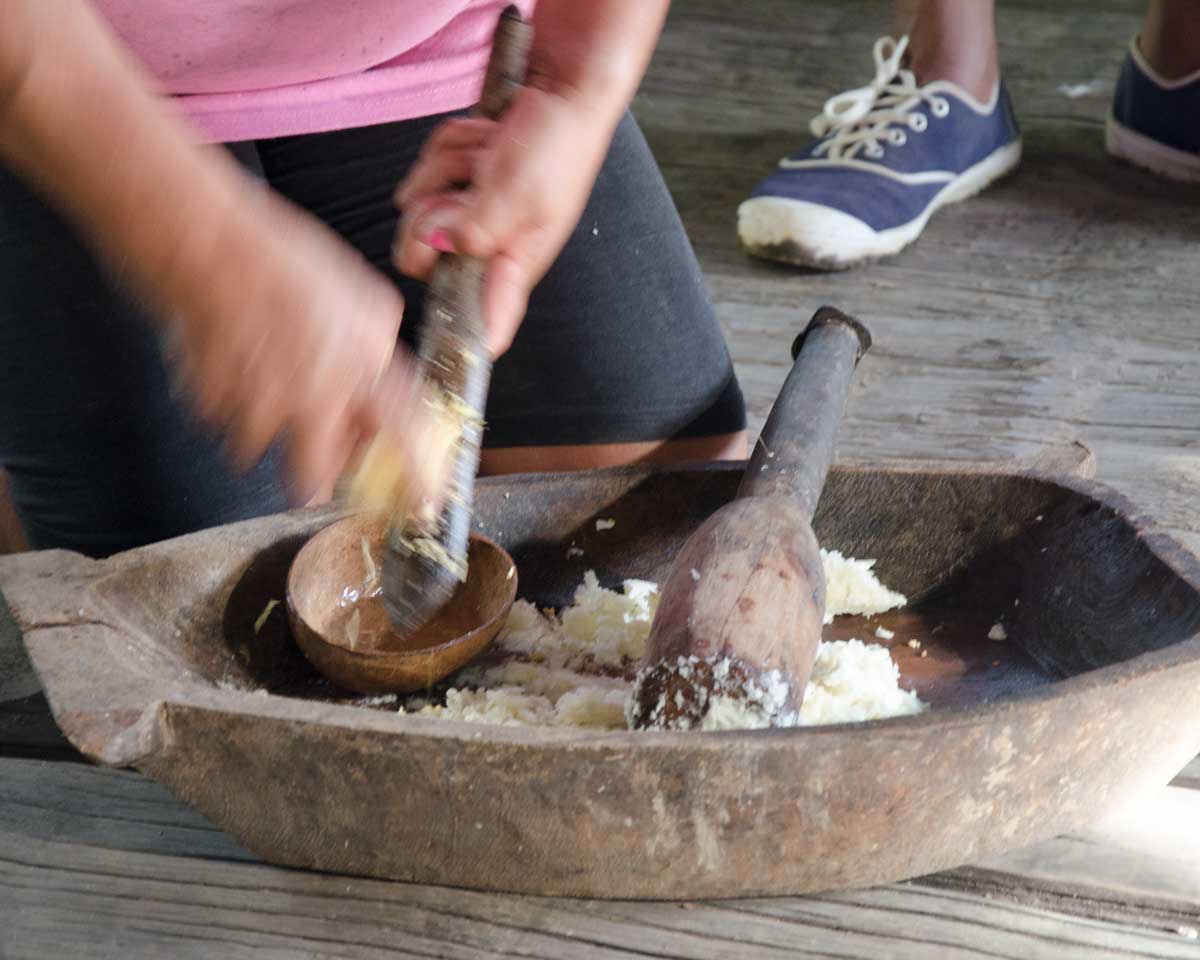

Many of the tourists purchased small blow dart sets that they then learned how to shoot outside the hut where we had learned about Quichua culture. I don’t know if the lodge where we stayed pays for each visitor or if the people on this island only make money from their sales. At the time, I didn’t even think to ask. I do know that some money is made from raising cacao and that I learned only because I asked when I saw a cacao tree along the trail. Overall, the interaction felt shallow and somehow unsatisfactory for both sides.
Tourism Has Become a Way of Life
Life on this island has a rhythm, I am sure. And the tourists have become a part of it. But I was much happier to see that some children didn’t find the need to follow us around. I saw kids playing games in the water while a mother looked on as she did the day’s washing. I saw kids playing games under the meeting place roof where two older teenage boys were re-thatching. I saw a young boy fishing in the river. For those people, life felt very normal. For those catering to us tourists, there was an undercurrent of discontent. And yet I still snapped picture after picture wanting to remember the emotions and the feelings after the fact.

As I look back at the photos, I wonder how could this encounter have been different?
In the short term, I have decided that I don’t like visiting local peoples in this way. I feel too much like a part of the problem. I prefer that my tourism dollars provide good, quality jobs or support a culture without having the individuals of that culture perform for us. A couple of years back we stayed at an eco-lodge in Northern Argentina where our Spanish/English speaking guide worked in partnership with a local Guarani guide. They worked with small groups of only 8 tourists instead of the huge group I experienced here in the Puerto Napo. Together, they introduced us to the subtropical jungle without ever making us feel like we were taking advantage of the Guarani or their culture. We never visited our Guarani guide’s home but we didn’t need to. He taught us so much about the way the Guarani live merely through his actions and his occasional words that we didn’t need more.
I left that experience wanting to help save his land and I shared what I learned with many others through my writing. I wrote about the jungle itself and about the sustainable harvest of Yerba Mate, the main source of money for the tribe. I left feeling that I could make a difference in an appropriate way. It wasn’t just about handing out coins.
This article was originally published on February 6, 2014; it has been updated with better-edited photos and some minor changes to the text.
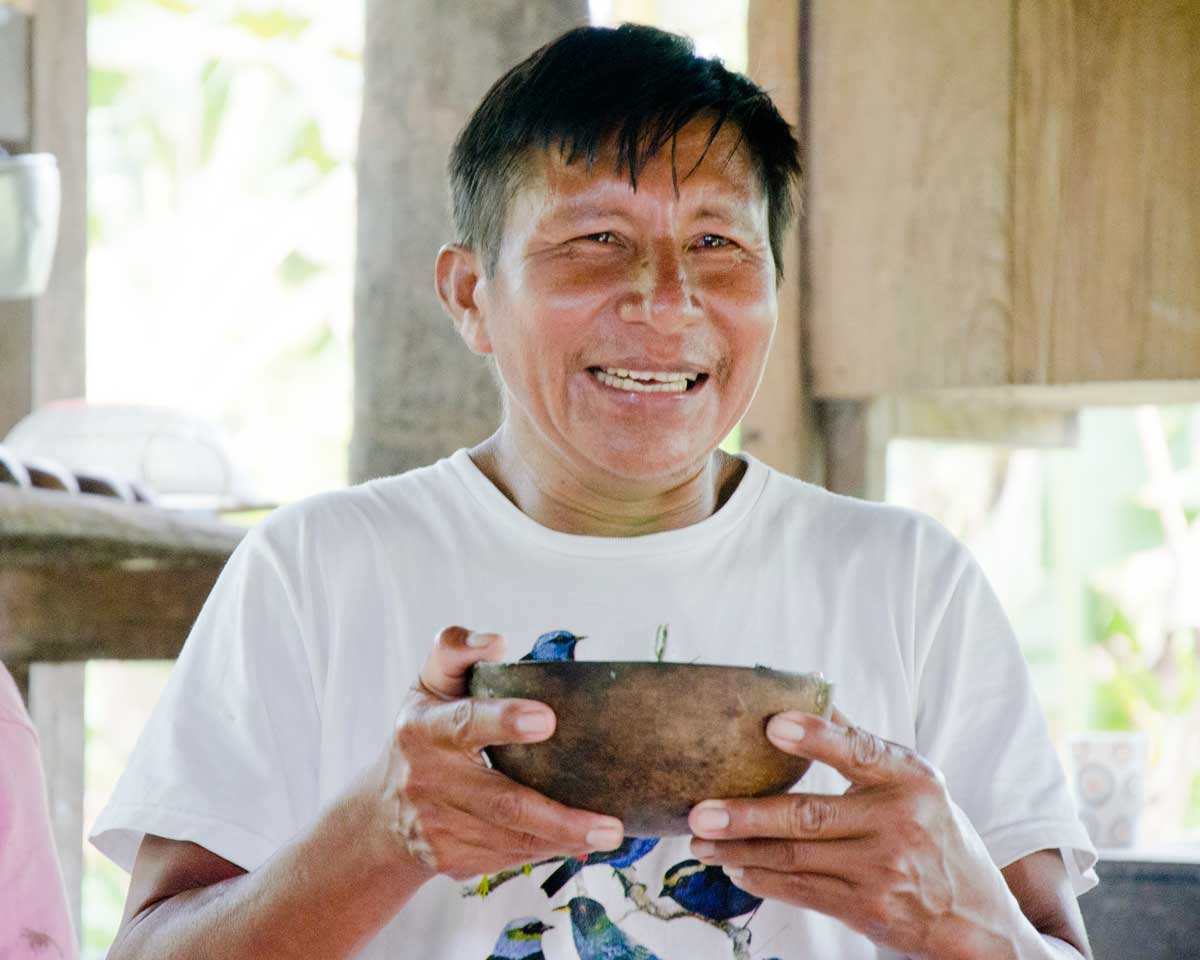

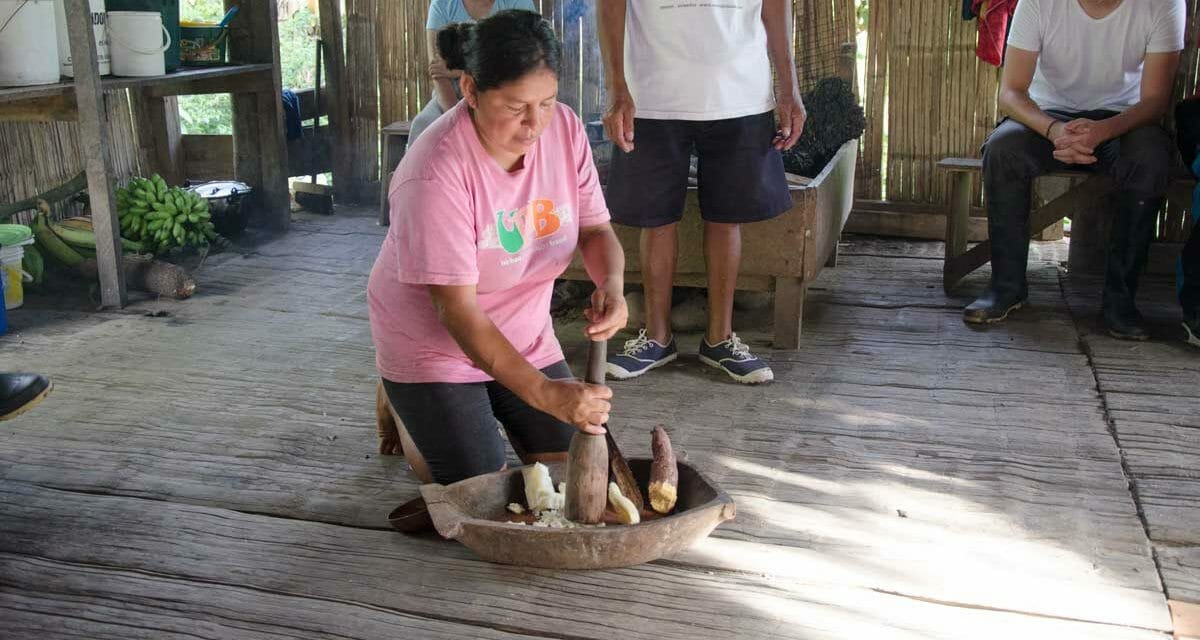

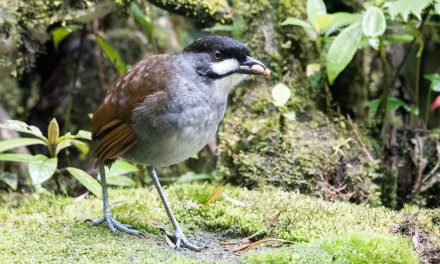

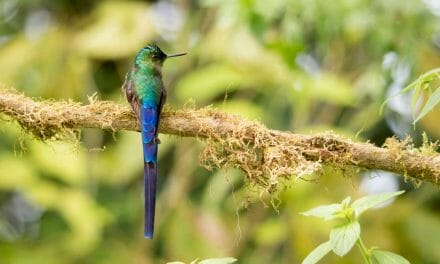

















Thanks, I’ve bookmarked your site; you are my connection to Ecuador, a country easy to love!
At least after you get used to the shotgun totin’ guards at the banks!
More please…
I promise lots more! We still have a lot of traveling to do… BTW they’ve decided to add those shotgun totin’ guards to some of the toll booths.
This is fascinating Angie. I know there is certainly a movement towards understanding sustainable tourism especially in developing parts of the world where tourism benefits a few at the top and the indiginous people lose their own identity and way of life and become mere curiosities and trinket peddlers. It is so complex…of course, those that stand to profit handsomely are ready to declare tourism a great benefit to communities but…look at the caribbean. So much is absorbed by big players that the local communityes become more like props for the pre-packaged quick-stop photo-snapping tourists. Your writing is tremendous and your insights are thoughtful. I am looking forward to more on this particular facet of travel and tourism from your perspective. and btw- good luck with the kitchen adventures in the meantime!! 🙂
You have a unique lens into the travel world Joann. I really appreciate your comments. I have a little more to write on this specific trip… it obviously got under my skin! Keep your eyes open for more 🙂
Angie,
This is great stuff! It is hard to write about other cultures since getting close enough to have some understanding means contact, and that means cross-pollination. It is difficult to observe and not have an effect (so says Quantum physics) and it is challenging, as a human, to observe and not feel the need to affect change out of sympathy or a desire to do well. I’m reminded of the naturalist Howard T. Odum and his father, sociologist Howard W., and brother Eugene, also. They looked at systems in ecology and sociology. HT was fond of saying that humans should travel the world with sacks of mixed seeds, sowing them randomly and learning to live with what springs forth. I think he tried to show us that humanity’s most consuming concerns are aesthetic, not vital. The idea of “invasive, non-native” plants, for instance, has nothing to do with biology, but everything to do with a human conception of what the land “should” look like. Consider that a Florida “native” plant, water lettuce, is currently being eradicated via disruptive chemical spraying because it was misclassified as a foreign invasive in the 80’s, not because of any proof that it came from else where, but because it showed similar characteristics, like spreading quickly and completely covering canals and springs. Consider that the pecan tree, noted by ecologist Bartram in the 1600s in the SE, and other similar species are currently outside of their “native” habitat. Note, they are outside of their native habitat, not their native geographical regions. What is a political boundary today, Georgia, is no longer the habitat described by Bartram with regular rains, plentiful birds, and topsoil as deep as a man’s arm. We plant and encourage pecan trees to grow because our human concept, an aesthetic idea, of “Georgia” is one of pecan trees. What is at issue is whether our aesthetics are prohibiting a more efficient use of that land by a better suited species than pecan (I pick on pecan because i love them, but one can choose any plant, here)? The world is all about change. I think the challenge is not to keep it from changing, but rather to ensure that the changes are sustainable, and that the human impact does not make humans less compassionate, less loving, or less understanding.
I think you should start writing your own blog.
Around here, if you are of an indigenous background and you move to the city and live a certain life, many no longer consider you indigenous any longer. Yet a pecan tree is always a pecan tree. I need to think about this a little longer. My brain has lot to figure out. Thanks for making me question more.